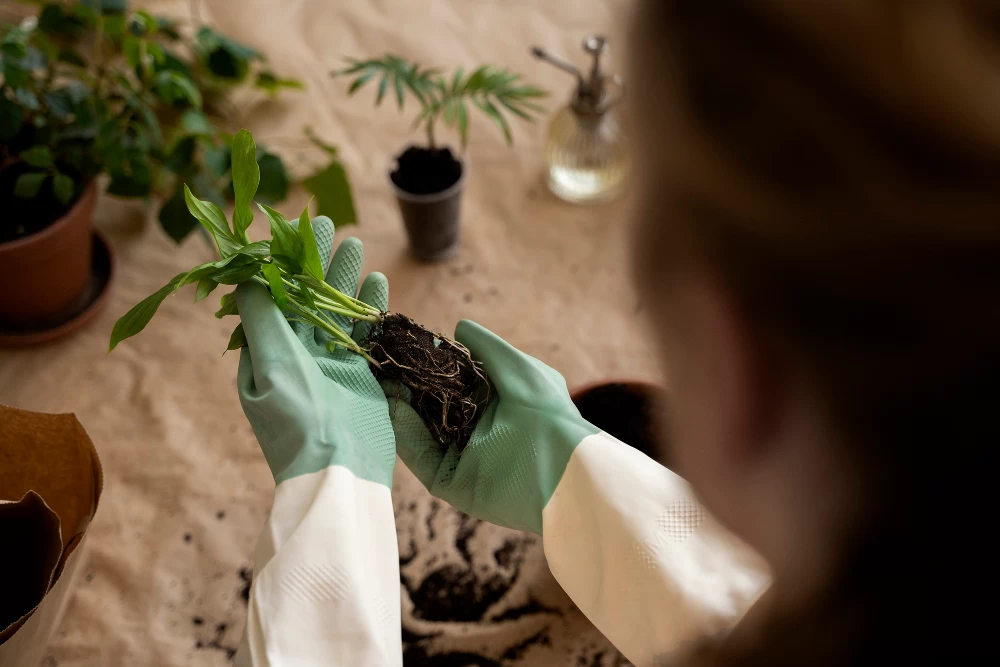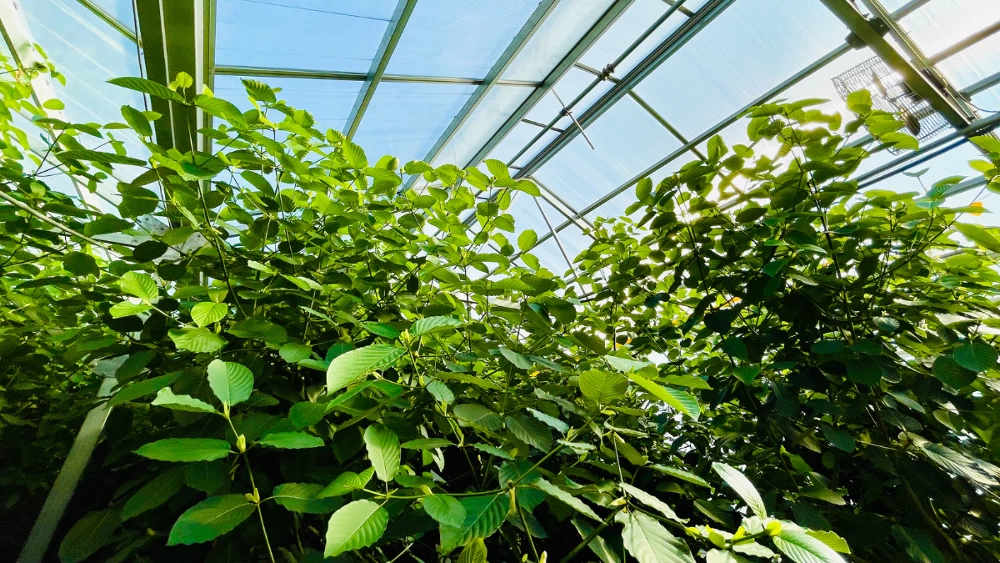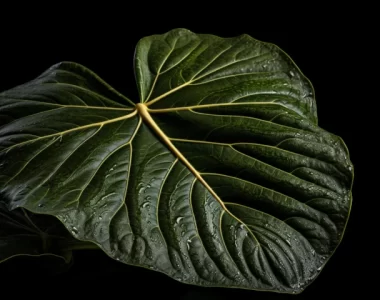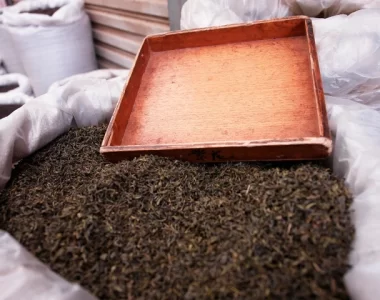Many folks ask, Can I grow my own Kratom? Are you ready to take control and grow your own kratom garden? Well, you’ve come to the right place! In this article, we will guide you through the step-by-step process of successfully growing your very own kratom trees.
We’ll cover everything from understanding different strains to harvesting and drying techniques. So get ready to embark on a journey that will not only provide you with an endless supply of fresh kratom but also give you a deeper connection to this amazing botanical wonder. Let’s dig in and discover how to grow your own kratom like a pro!
What is Kratom?
Kratom, scientifically known as Mitragyna speciosa, is a tropical evergreen tree native to Southeast Asia. It belongs to the coffee family and has been used for centuries for its medicinal properties. The leaves of the kratom plant contain naturally occurring compounds called alkaloids, with two key ones being mitragynine and 7-hydroxymitragynine.
One of the most fascinating aspects of kratom is its diverse range of effects. Depending on the strain and dosage, it can act as a stimulant, providing an energy boost and increased focus. On the other hand, higher doses may produce sedative effects, helping with relaxation and sleep.
Moreover, kratom has gained popularity due to its potential analgesic properties. Many individuals use it as a natural alternative for managing chronic pain conditions. Additionally, kratom enthusiasts have reported mood enhancement benefits and improved overall well-being.
It’s important to note that while kratom has been traditionally used in Southeast Asian countries like Thailand and Malaysia, its legality varies across different regions globally. Therefore, always check your local laws before growing or using kratom.
Intrigued by this powerful botanical? Let’s delve deeper into why growing your own kratom garden could be beneficial for you!
Benefits of Growing My Own Kratom
Growing your own kratom offers a multitude of benefits that can enhance your overall experience with this incredible plant. Cultivating your own kratom allows you to have complete control over the quality and purity of the product.
You know exactly what goes into growing it – no pesticides or additives that could potentially compromise its effectiveness.
Additionally, having your own kratom garden gives you the freedom to experiment with different strains and find the ones that work best for you.
Each strain has unique properties and effects, so growing multiple varieties ensures that you always have access to the right one for any given situation.
Furthermore, growing kratom can be a highly rewarding and therapeutic hobby. There is something incredibly fulfilling about nurturing plants from seeds and watching them flourish under your care.
It provides a sense of connection with nature and a deeper appreciation for this amazing botanical resource.
Moreover, having your own supply of fresh kratom leaves means you never have to worry about running out or relying on external sources. You are self-sufficient and in control of when and how much kratom you harvest.
Growing your own kratom offers numerous advantages – from maintaining quality control to providing an enriching hobby. It’s an empowering way to ensure a steady supply while exploring various strains at your leisure.
Start cultivating today and enjoy all the benefits it brings!
Understanding the Different Strains of Kratom
Kratom, a tropical evergreen tree native to Southeast Asia, offers many benefits. One key factor that sets it apart is its numerous strains, each with its own unique properties and effects. Let’s take a closer look at some popular kratom strains.
1. Red Vein: Known for its calming and pain-relieving effects, red vein kratom is often used for relaxation and stress reduction. It may also provide relief from chronic pain conditions.
2. Green Vein: This strain strikes a balance between the relaxing qualities of red vein kratom and the energizing properties of white vein kratom. Users often report increased focus, mental clarity, and mood enhancement.
3. White Vein: If you’re looking for an energy boost or increased alertness, white vein kratom may be your best choice. It is commonly used as a natural alternative to caffeine-rich beverages like coffee.
4. Maeng Da: Renowned for its potent effects, Maeng Da originated in Thailand but has gained popularity worldwide due to its stimulating properties and long-lasting effects.
5. Green Malay: Considered one of the most potent strains available on the market today, Green Malay provides users with enhanced energy levels while promoting feelings of euphoria and well-being.
Everyone’s experience with different strains can vary based on their body chemistry and tolerance level. Experimenting with different strains will help you find the one that suits your needs best!
How To Grow My Own Kratom: Step-by-Step Guide
The growing process of Kratom plants requires careful attention and a bit of patience, but it can be a rewarding experience to cultivate your very own supply.
Here is a step-by-step guide to help you get started.
First, start by purchasing Kratom seeds or cuttings. You can buy them from reputable online vendors or seek out local nurseries specializing in rare plants. The best place to buy your kratom seeds or starter plants is TEXAS COAST BOTANICALS.
Once you have your supplies, prepare a suitable potting mix using well-draining soil and organic matter.
Next, plant the seeds or cuttings in the potting mix, placing them at an appropriate depth and spacing. Keep the soil consistently moist but not overly saturated. Place the pots in a warm, humid environment with filtered sunlight for optimal growth.
As the seedlings begin to sprout, Please provide them with regular watering and ensure they receive adequate light exposure. It’s important to monitor their progress closely during this stage as they are delicate.
Over time, as your Kratom plants grow taller and stronger, consider transferring them into larger containers or planting them directly into the ground if climate conditions permit. This will allow for better root development and overall growth potential.
Remember to regularly fertilize your trees with high-quality organic fertilizer specifically formulated for tropical plants like Kratom. Pruning dead leaves or branches can promote healthier growth and prevent disease.
Keep in mind that different strains of Kratom may require slightly different care instructions based on their specific needs. Therefore, it’s crucial to research the particular strain you’re cultivating for tailored guidance throughout each stage of its growth cycle.
By following these steps diligently while adapting to individual plant requirements, you’ll soon find yourself enjoying the fruits (or rather leaves) of your labor – fresh, homegrown Kratom!
So roll up those sleeves and prepare for an exciting journey to becoming a proud cultivator of this amazing botanical treasure!
Choosing a Location for Growing My Own Kratom
Choosing the right location for growing kratom is crucial to ensure its successful cultivation. Here are some important factors to consider when deciding on the perfect spot:
1. Climate: Kratom plants thrive in tropical climates, so choosing a location with consistent temperatures between 75-90°F (24-32°C) is essential. They also require high humidity levels, ideally around 70-90%.
2. Sunlight: Kratom plants need plenty of sunlight but can also benefit from partial shade. Look for an area that receives at least six hours of direct sunlight daily.
3. Soil Quality: The soil should be well-draining and rich in organic matter. Conduct a soil test to ensure it has the proper pH level (between 5.5 and 6.5) and contains essential nutrients like nitrogen, phosphorus, and potassium.
4. Water Source: Access to reliable water sources is vital for watering your kratom plants regularly. Consider proximity to natural water bodies or installing irrigation systems if needed.
5. Space: Kratom trees can grow up to 50 feet tall, so ensure you have enough space for their growth without obstructing any structures or neighboring plants.
6. Environmental Factors: Consider local environmental factors such as wind patterns, frost risks, pests, and diseases prevalent in your area that may affect kratom growth.
By carefully considering these factors when selecting a location for growing kratom, you can create an ideal environment that supports healthy plant development and maximizes your chances of success!
Harvesting and Drying Your Kratom Plants
Harvesting and drying your kratom plants is a crucial step in the process of growing my own kratom. It’s important to know when and how to harvest your plants, as well as the best methods for drying them.
When it comes to harvesting, timing is everything. You want to wait until the leaves on your kratom plant are fully matured before you begin harvesting. This usually occurs around four to six months after planting.
Look for leaves that have a dark green color and are about the size of your palm.
To harvest the leaves, use a sharp pair of scissors or pruning shears to cut them off at the stem. Be sure not to remove all leaves from one plant at once, as this can stunt its growth. Instead, try harvesting a few leaves from each plant every few weeks.
Once you’ve harvested your kratom leaves, it’s time to dry them out. Drying helps concentrate the alkaloids in the leaves, which gives kratom its potent effects. There are several methods you can use for drying your kratom plants.
One popular method involves laying the harvested leaves on a flat surface in a well-ventilated area away from direct sunlight. Ensure there is enough airflow around each leaf to dry evenly.
This method typically takes about one week for the leaves to dry completely.
Another option is using a food dehydrator set at low heat or an oven set at its lowest temperature (around 120 degrees Fahrenheit). Both methods can speed up the drying process but require more monitoring and attention.
Once dried, store your kratom leaves in an airtight container away from moisture and light until you’re ready to use them. Keep in mind that correctly dried and stored kratom has a longer shelf life compared to improperly dried or stored ones.
Now that you understand how essential it is to harvest and dry your kratom plants correctly, you can ensure that your plants will yield high-quality kratom powder. Next
Tips for Maintaining a Successful Kratom Garden
1. Proper watering: One of the most important aspects of maintaining a successful kratom garden is ensuring that your plants receive adequate water. Kratom plants thrive in moist conditions, so watering them regularly is crucial. However, be careful not to overwater, as this can lead to root rot and other problems.
2. Provide sufficient sunlight: Kratom plants require plenty of sunlight to grow and flourish. Find a location with partial shade where they can receive filtered sunlight throughout the day. Use grow lights or place your plants near a window that receives ample natural light if growing indoors.
3. Fertilize appropriately: To encourage healthy growth, providing your kratom plants with suitable nutrients is essential. Use a balanced fertilizer specifically formulated for leafy green plants and follow the instructions on the packaging carefully.
4. Prune regularly: Pruning helps maintain the health and shape of your kratom plants by removing dead or damaged leaves and promoting new growth. Trim any yellowing or discolored leaves as soon as you notice them to prevent the disease from spreading.
5. Protect from pests: Watch for common pests like aphids, mites, and caterpillars that can damage your kratom plants’ leaves and stems. Use organic pest control methods such as neem oil or insecticidal soap if necessary.
6. Supportive environment: Create an optimal environment for your kratom garden by providing proper temperature (around 70-90°F), humidity (60-70%), and good air circulation.
By following these tips, you’ll create an ideal growing environment for your kratom garden and increase your chances of achieving success in cultivating this remarkable plant!
Potential Challenges and Solutions
1. Climate: One of the biggest challenges when growing kratom is finding the right climate. Kratom plants thrive in tropical and subtropical regions, so if you live in a colder or drier climate, it may be more difficult to cultivate them successfully. However, there are solutions to this challenge. Consider using a greenhouse or indoor grow lights to create a controlled environment with optimal temperature and humidity levels.
2. Pests and diseases: Like any other plant, kratom is susceptible to pests and diseases that can hinder its growth. Common pests include aphids, mites, and scale insects, while diseases like leaf spot and root rot can also affect your plants’ health. Regularly inspect your plants for signs of infestation or disease to combat these issues. Use organic pesticides or natural remedies to prevent damage without harming the environment.
3. Soil quality: Kratom requires well-draining soil rich in organic matter for healthy growth. Cultivating kratom plants outdoors may pose a challenge if your soil lacks these qualities. The solution lies in improving soil conditions by adding compost or other organic amendments that enhance drainage and provide essential nutrients.
4. Watering needs: Overwatering or underwatering can cause significant problems for kratom plants. Finding the right balance can be challenging since different strains have varying water requirements based on their origin and environmental conditions.
To address this challenge effectively, get familiar with your specific strain’s watering needs through research or seek advice from experienced growers.
5. Time commitment: Growing kratom requires patience as it takes time for the trees to mature enough for harvesting leaves. The process involves nurturing young seedlings until they become robust trees that produce high-quality leaves.
While waiting for maturity, it’s crucial to maintain consistent care, including regular pruning, fertilizing, and monitoring overall plant health. By being aware of these potential challenges associated with growing kratom, you’ll be better prepared to overcome them and enjoy a successful garden. Remember, each challenge comes with its own
Safety Precautions and Legal Considerations
When it comes to growing my own kratom, there are a few essential safety precautions and legal considerations to keep in mind. First and foremost, it’s crucial to ensure that you are legally allowed to grow kratom in your area. You can check the map on this page. Kratom regulations vary from country to country and even within different states or provinces.
Before embarking on your kratom-growing journey, do thorough research on the legality of kratom cultivation in your specific location. Contact local authorities or consult with experts knowledgeable about this plant’s laws.
Once you have confirmed that it is legal to grow kratom where you live, it’s essential to prioritize safety throughout the entire process. Handling plants involves some level of risk, so taking proper precautions will help ensure a safe environment for yourself and others.
Safety. One important aspect of safety is using appropriate protective gear when working with your kratom plants. This can include gloves, masks, and eye protection if necessary. Additionally, be mindful of any potential allergens or irritants while handling the plants.
Safeguard. Another key consideration is ensuring children and pets cannot access the growing area without supervision. Kratom leaves may be toxic if ingested in large quantities or by particularly sensitive individuals. Always store harvested leaves safely out of reach.
Cleanliness. Furthermore, maintaining good hygiene practices is crucial when cultivating kratom at home. Regularly clean all equipment used during planting or harvesting to prevent contamination or mold growth.
Keep Your Stash. Last but not least – never sell any homemade products containing kratom unless you fully understand the legalities surrounding its distribution in your region. Selling unauthorized substances can lead to serious consequences, including fines or criminal charges.
Conclusion: Enjoying the Rewards of Growing My Own Kratom
Now that you have learned how to grow my own kratom, it’s time to reap the rewards of your hard work and patience. By cultivating this remarkable plant at home, you not only save money but also gain a deeper appreciation for the intricacies of nature.
Growing your own kratom gives you full control over the quality and potency of the leaves, ensuring that you have access to a fresh and reliable supply. Whether you plan on using kratom for its medicinal properties or enjoy its relaxing effects, having a personal garden allows you to tailor your experience according to your needs.
Remember that each strain offers unique benefits and characteristics. Experiment with different strains to discover which ones suit your preferences best. This way, you can create a diverse collection in your garden that caters specifically to various purposes.
Maintaining a successful kratom garden requires dedication and attention to detail. Pay close attention to factors like lighting, temperature, humidity levels, soil composition, and watering schedule. Regularly monitor the health of your plants so that any issues can be addressed promptly.
While growing kratom is an immensely rewarding experience, there may be challenges along the way. Pests or diseases might affect your plants’ growth, or adverse weather conditions could impact their overall health. However, these challenges can be overcome by staying vigilant and implementing effective solutions when needed.
It is crucial always to prioritize safety precautions while growing kratom plants at home. Ensure proper ventilation in indoor gardens and protect outdoor plants from extreme weather conditions or potential threats like animals or thefts. Additionally, familiarize yourself with local regulations regarding kratom cultivation, as laws may vary from place to place.
By following these guidelines for growing kratom successfully at home while considering all necessary factors, such as strain selection, location choice, and maintenance techniques, you’ll soon find yourself enjoying high-quality leaves harvested directly from your very own garden.







